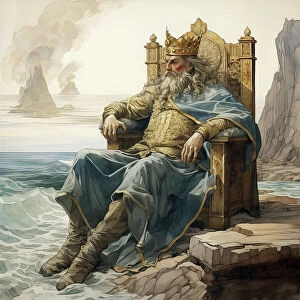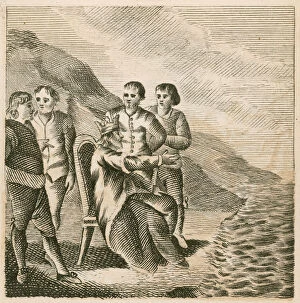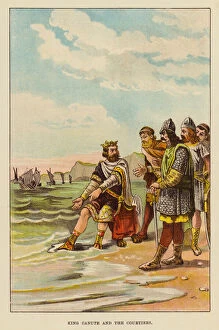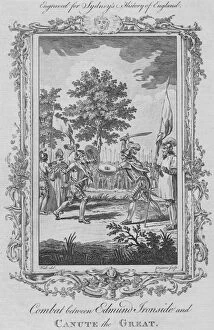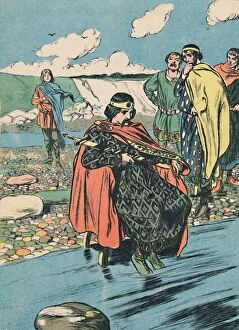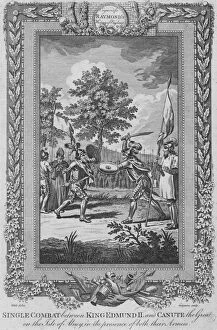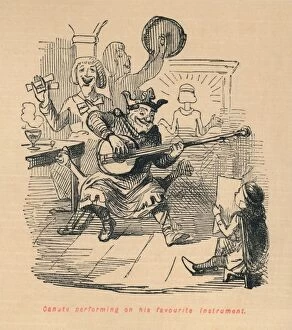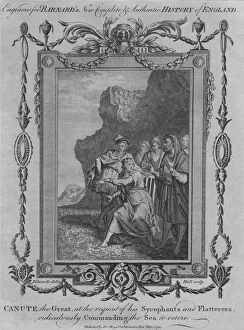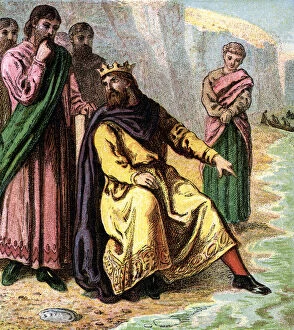Canute I Collection
"Canute I: The Powerful Danish King Who Commanded the Seas and Confronted Flattery" King Canute I, also known as Canute the Dane
All Professionally Made to Order for Quick Shipping
"Canute I: The Powerful Danish King Who Commanded the Seas and Confronted Flattery" King Canute I, also known as Canute the Dane, was a formidable ruler who left an indelible mark on history. Born around 995, he ascended to the throne of England in 1016 after defeating his rival Edmund Ironside. This meeting between the two kings on the Isle of Alney in c1890 captured a pivotal moment in their tumultuous relationship. One of Canute's most famous acts occurred when he commanded the sea to retreat. Depicted in an engraving, this event symbolized his attempt to demonstrate that even a king's power had limits. It showcased his wisdom and humility, challenging popular misconceptions about his reign. In another captivating lithograph titled "King Canute and the Courtiers, " we witness how sycophantic flattery surrounded him. Despite being depicted as commanding tides at their request, it is clear that Canute reproved such behavior from his courtiers. These engravings from different eras shed light on how artists interpreted this historical incident. Canute's reign was not without challenges; Sweyn Forkbeard, Olaf II of Norway, Edmund II Ironside were all significant figures during this time period before William the Conqueror arrived with Norman rule. An engraving featuring these monarchs showcases their influence and highlights Canute's rise to power amidst political turmoil. Coins minted during Egbert's reign until Harthacnut’s era provide further insight into English history before Norman conquest—each coin representing a chapter within which Canute played a vital role. The various engravings and artworks depicting King Canute I offer glimpses into different aspects of his life and reign. A portrait from 1830 captures him regally while remaining anonymous creator adds intrigue to its origins. Lastly, two paintings depict moments where King Canute reproves his courtiers for their flattery.

